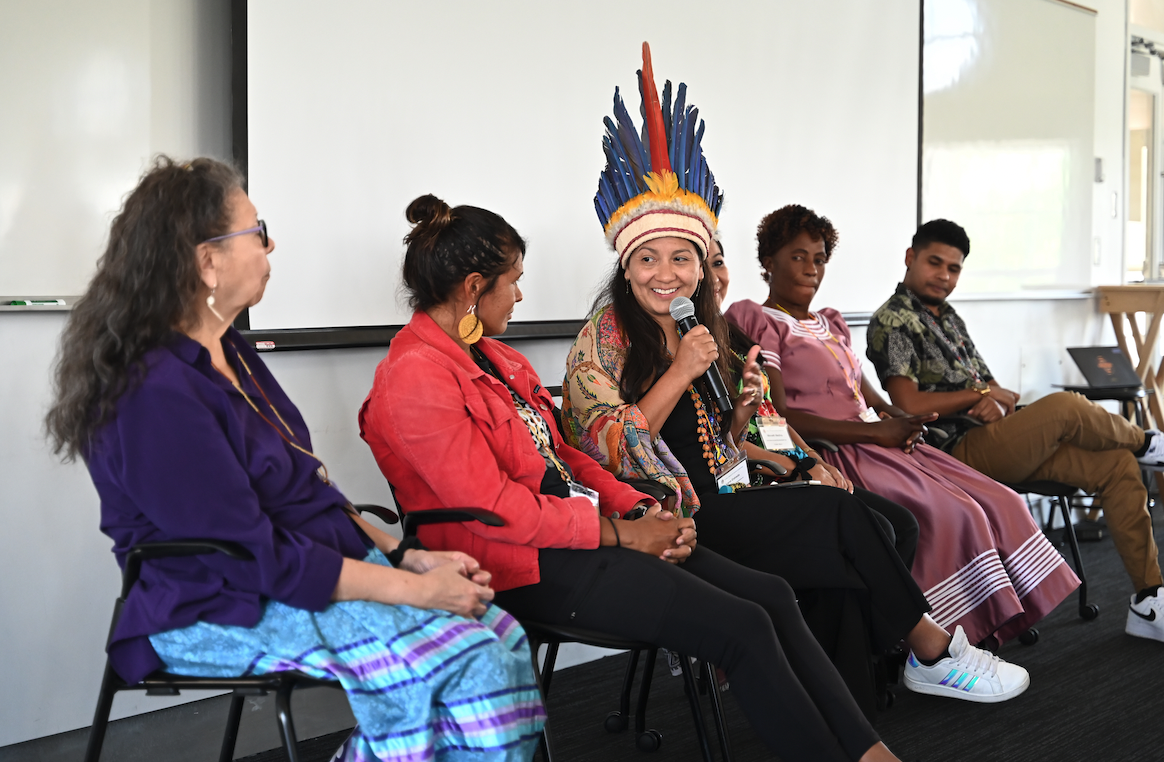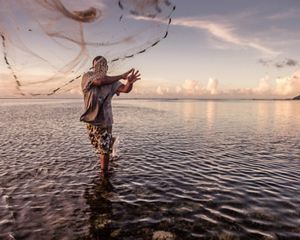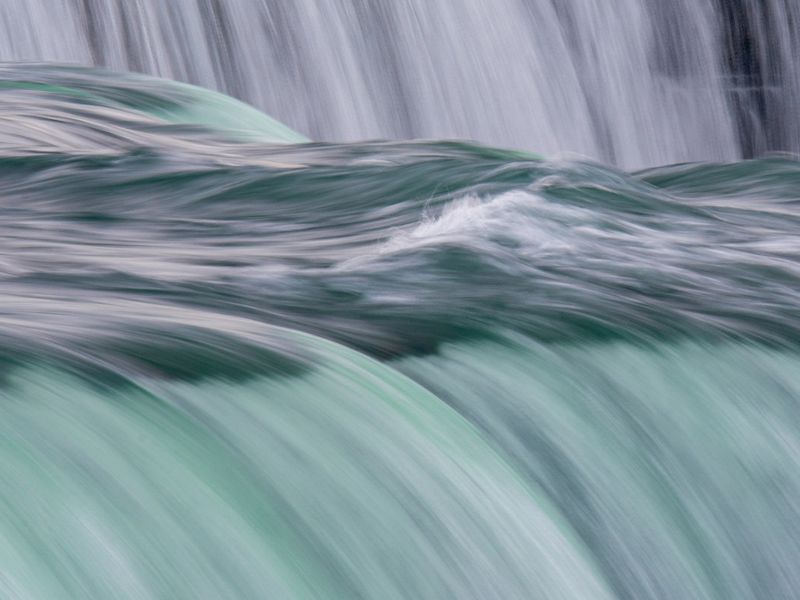
Niagara Falls, NY “We are here because of the water,” said Norma Jacobs, a member of the Wolf Clan of the Cayuga Nation © Kyle Lowry/TNC Photo Contest 2022
“We are here because of the water,” said Norma Jacobs, a member of the Wolf Clan of the Cayuga Nation, as 160 people from around the world gathered at the blue-green brim of Niagara Falls. The sun broke through the clouds and lit up a silvery mist as waters from the Great Lakes—the world’s largest freshwater system—thundered over the falls. “We are here to remember who we are, where we come from and where we are going,” Jacobs continued.
The group convened in Buffalo and Niagara, New York, at the University at Buffalo, for The Nature Conservancy’s second Voice, Choice & Action (VCA) gathering because of the location’s spiritual, historical and ecological significance. The area lies at the heart of the Haudenosaunee Confederacy, commonly referred to as the Six Nations Iroquois Confederacy. Its six nations—the Mohawk, Oneida, Onondaga, Cayuga, Seneca and Tuscarora—form the oldest continuous participatory democracy in the world.
Holding the gathering in New York, where The Nature Conservancy got its start more than 70 years ago, was also an acknowledgment of our organization’s history and a celebration of the role Indigenous communities have played in conservation. Around the globe, Indigenous Peoples and local communities have long protected their lands and waters in reciprocity with nature, often guided by deep connections to place, culture and ways of knowing. These communities collectively manage at least one-quarter of the world’s lands, 17% of all forest carbon and vast stretches of freshwater and marine habitats. Their stewardship and management have been a huge contribution to conservation and biodiversity around the world. The Haudenosaunee are among the many local and Indigenous communities that demonstrate conservation with reciprocity and in a way that honors and includes Indigenous knowledge and leadership.
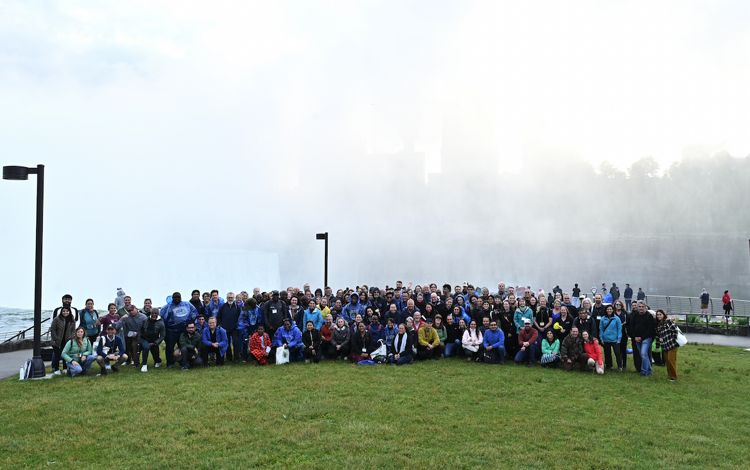
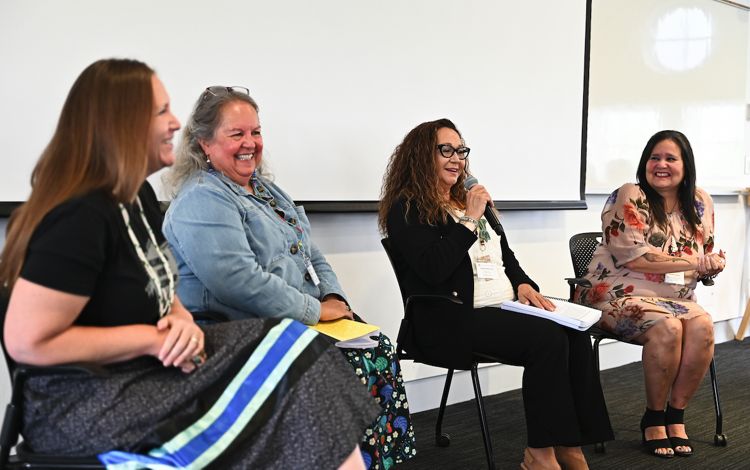
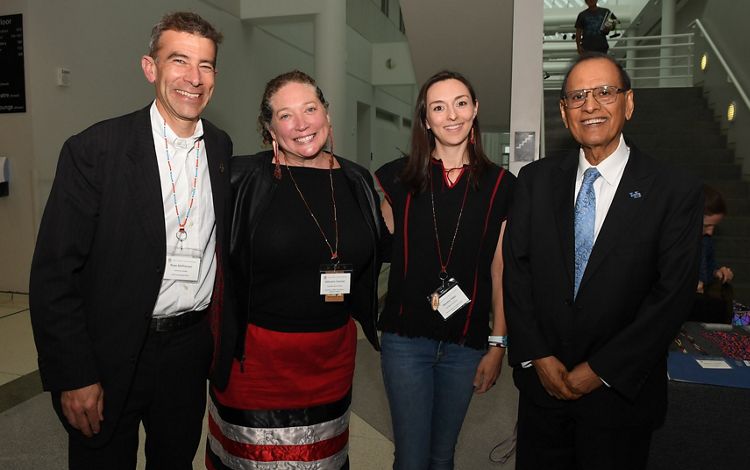
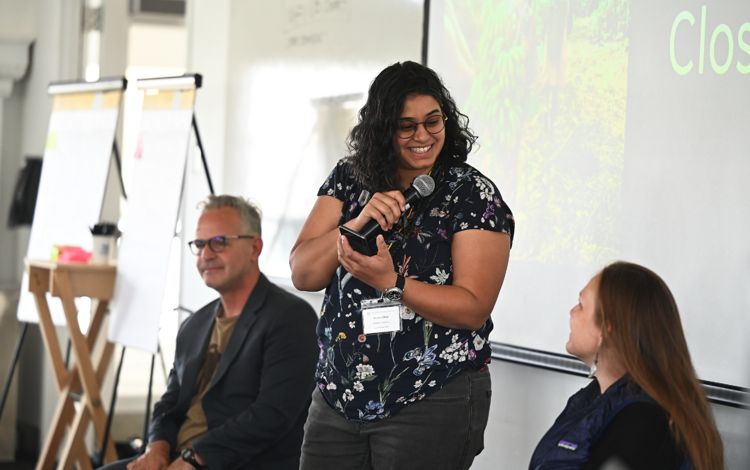
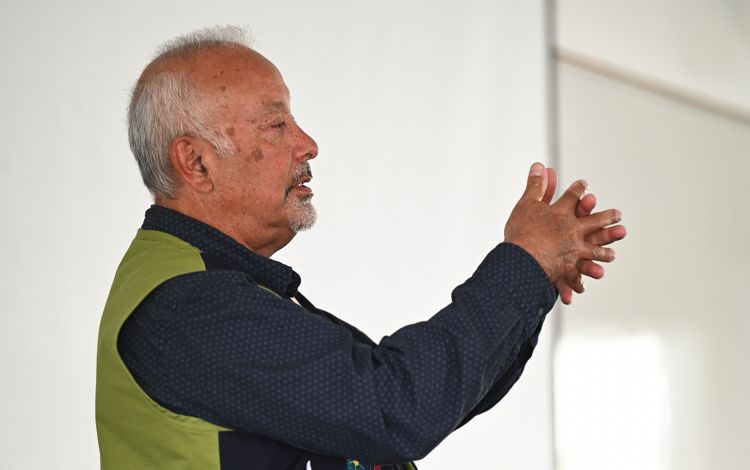
In her opening remarks, Brie Fraley, Citizen of the Tolowa Dee-ni' Nation and former North America Indigenous Right Relations director for The Nature Conservancy, described the gathering as an opportunity for healing. “We often focus on the ‘what,’ but this week is about the ‘how,’" said Fraley. “It’s about the responsibility we all have: to come into balance, to recognize our privilege and to use it to repair our relationships. We focus on three global solutions at The Nature Conservancy, but there is a fourth solution as well—one of right relations.”
Right Relations for Balance, Restoration and Justice
The idea of “right relations” comes from Indigenous thinking and activism and was one of several themes that flowed through four days of listening sessions, guided discussions and ceremony in Buffalo. Ruchatneet Printup, a member of the Turtle Clan of the Tuscarora Nation, described right relations in terms of any healthy relationship: “If there is no respect or kindness, we’ll shy away from that relationship. It’s the same with the Earth. If we don’t have that balance, the natural world pulls back from us.”
Evidence of a world out of balance could be found in every corner of Earth this summer as more than 1,000 wildfires raged in Canada and many places experienced record-breaking heat, drought and flooding. Speakers at VCA reflected on how vital it is to listen to Indigenous wisdom in addressing these threats. Indigenous knowledge is helping firefighters in Canada access the most efficient routes and water sources, and Indigenous practices like controlled burns could reduce this threat in the future—if these communities are given greater authority and the ability to care for the land.
“Right relations means building together and understanding each other,” said Isai Victorino, community-based conservation lead for The Nature Conservancy in Colombia. “It asks how we can embody respect and reciprocity to foster healthy relationships with each other and our plant, animal and human relatives.”
Fraley said right relations also means honoring the Two-Row Wampum (Gaswéñdah) Treaty and sharing power. The wampum belt contains two rows of purple lines that represent a canoe and a ship traveling down the river of life in parallel, bound together in their journey but also completely autonomous. “Our organization has benefited from colonial land practices. But our mission is broad, and we can redefine our work and show up in a different way,” Fraley said.
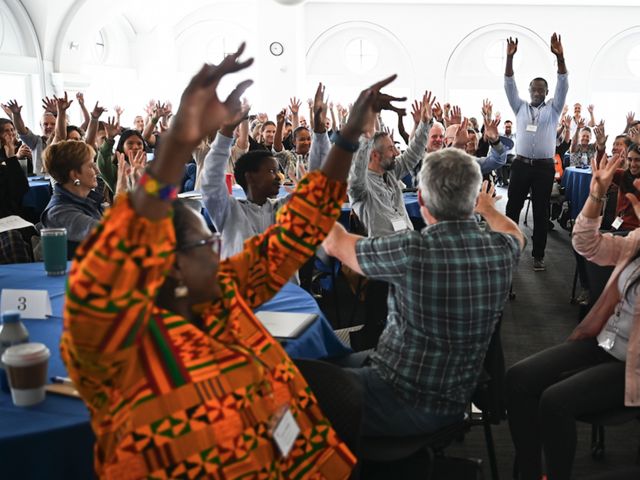
The Last Round of the Fight
In keeping with Haudenosaunee tradition, the gathering began with a reading of the Ganö:nyök, or Thanksgiving Address, by Clayton Logan, Wolf Clan of the Seneca Nation, on whose territory the gathering took place. The “words that come before all else,” spoken in the Seneca language, reverberated through the dark auditorium and grounded everyone in a practice of gratitude—just as they have for thousands of years.
“The purpose of the Thanksgiving Address is to remind us how much we are loved,” explained Elder Norma Jacobs. “Human beings are forgetful and need reminders. Colonialism is still here and active, and we must raise our voices.”
Dismantling colonialism is also critical to fighting climate change, said Oren Lyons, Faithkeeper of the Turtle Clan of the Onondaga Nation. In his keynote address, Lyons—a highly respected global advocate of Indigenous rights, key architect of the United Nations Declaration of the Rights of Indigenous Peoples and long-time professor at the University at Buffalo—called global warming a “soft” term.
“This is an existential crisis we’re in,” he said. “We have to be the family that we are—the human family. The Seven Generations yet to come: that is who we are working for, and it looks pretty murky out there for them. But scale is represented here, and that is what it’s going to take. We’re in the last round of the fight but it’s not over.”
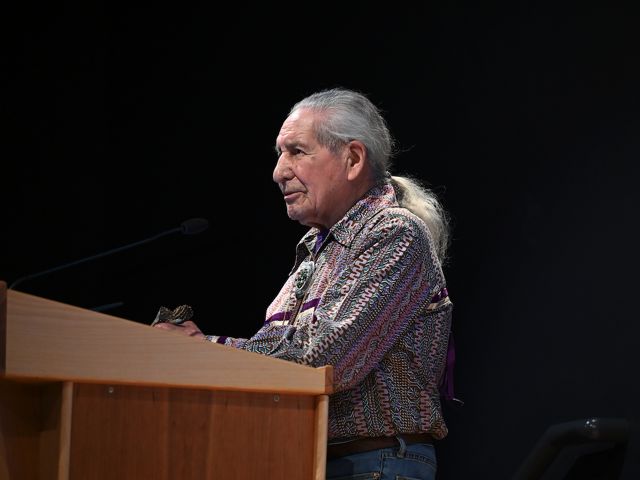
Answering the Call in New York
In introducing Lyons, Bill Ulfelder, executive director of The Nature Conservancy in New York, recounted how, in 2018, Lyons challenged The Nature Conservancy to partner with the Haudenosaunee Confederacy. Lyons asked us to use our influence and strength to tackle climate change and support Indigenous sovereignty. Since that time, The Nature Conservancy has taken steps in New York to collaborate with SUNY-ESF’s Center for Native Peoples and the Environment and develop an Indigenous Partnerships Program built on establishing trust, building relationships and honoring self-determination and sovereignty.
Ulfelder explained, “Since that meeting at Akwesasne, we’ve worked to advance land justice by supporting the Onondaga Nation in regaining more than 1,000 acres of their land through a historic agreement with New York State and the U.S. federal government. We’ve supported the Haudenosaunee Environmental Task Force in bringing their message on climate change to national and global forums as sovereign nations. And we’re identifying opportunities to rematriate ancestral lands. But we are not running fast or hard enough.”
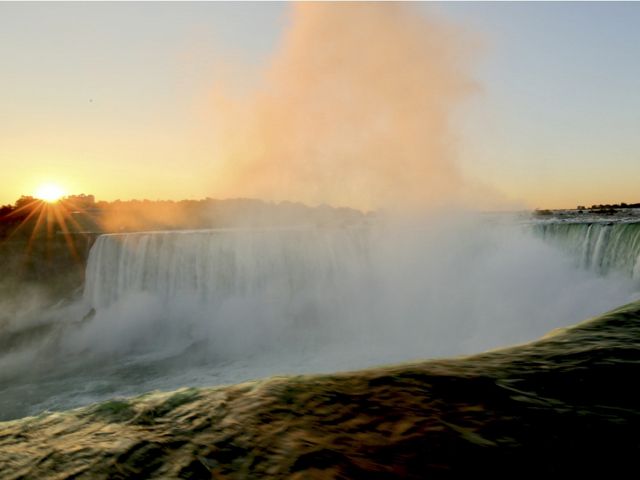
The Nature Conservancy co-hosted the event with the University at Buffalo (UB), which has one of the oldest Indigenous Studies programs in the United States. The event program was shaped by an advisory council composed of Norma Jacobs, Wolf Clan of the Cayuga Nation; Ruchatneet Printup, Turtle Clan of the Tuscarora Nation; Mishuana Goeman, Tonawanda Band of Seneca, daughter of enrolled Hawk Clan and chair of UB Department of Indigenous Studies; Jason Corwin, Deer Clan of the Seneca Nation and UB assistant professor of Indigenous Studies; and Ryan McPherson, UB chief sustainability officer; and Curtis Ogden from the Interaction Institute for Social Change.
“We designed everything with this group,” said Mariana Velez, VCA gathering lead, who works with The Nature Conservancy’s Global Program for Conservation in Partnership with Indigenous Peoples and Local Communities. “We did our best to preserve the space and let it be filled up with Haudenosaunee knowledge and hospitality as we reflected on where we are in our journey to uplift Indigenous and community-led conservation around the world.”
Minneth Medina, director of Junta Intermunicipal Biocultural del Puuc, emphasized that it is critical to speak with the Indigenous Peoples in each area before taking any conservation action and to acknowledge Indigenous knowledge at the same level as scientific knowledge. “The nature is not there alone—the biodiversity is rich because of the people who are there, caring for those places,” she said.
Carol Bogezi, Indigenous Peoples and Local Communities research analyst for The Nature Conservancy, reflected: “While Indigenous people around the world are separated by oceans, there are similarities and connections. It gives me hope that we’re not just thinking of one form of knowledge but recognizing there are many and that we can learn from elders, technology and innovation—all in the same boat of this Earth. Hard conversations are a good sign that we are opening to genuine dialogue. Discomfort helps us grow.”
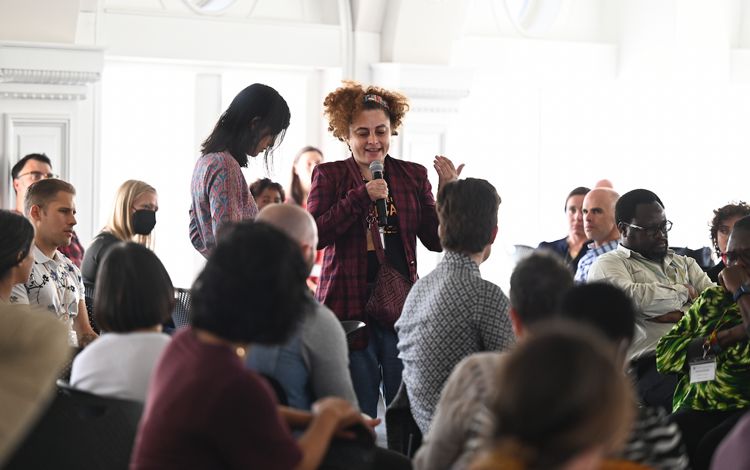
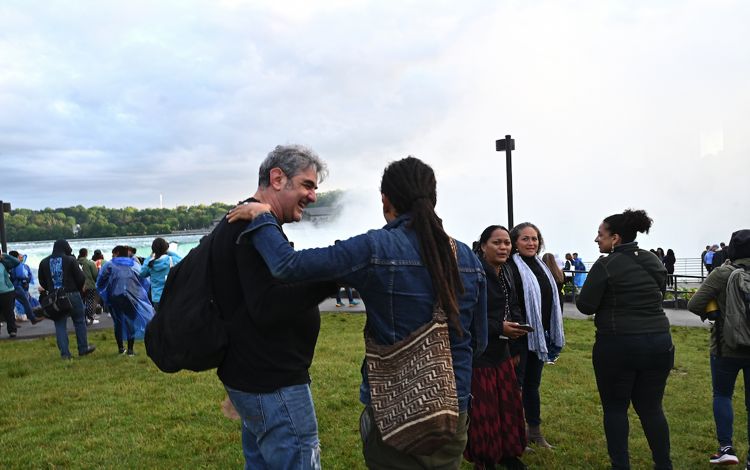
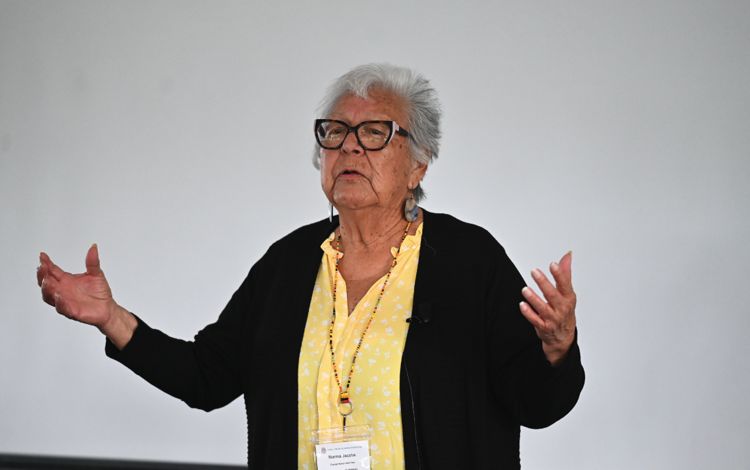
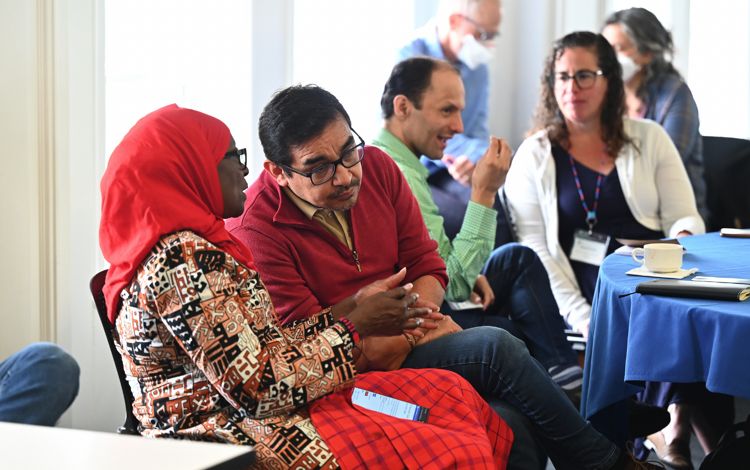
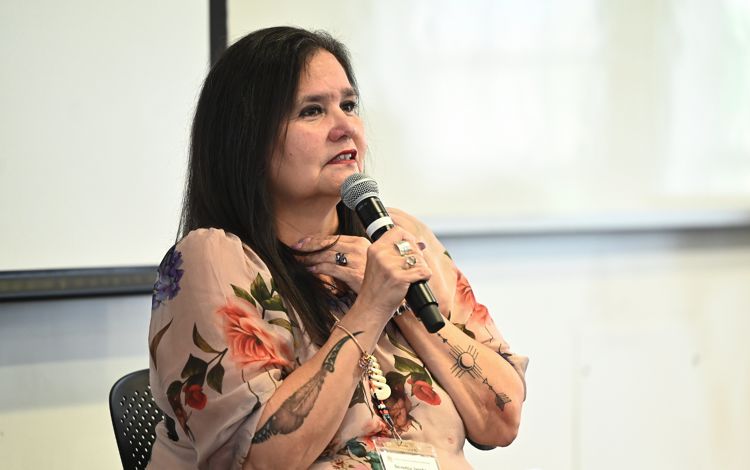
“To Mitigate the Climate Crisis, Give the Land Back”
Discomfort, joy, sorrow and gratitude were among the range of emotions experienced in Buffalo as participants listened, discussed, planned, danced and prayed together. Coming together just a week after New York’s skies were dimmed by climate change-fueled fires in Canada was a stark reminder of the ways in which we are connected and the urgency of the work at hand.
“I want to turn to the fires for a moment,” said Dr. Robin Wall Kimmerer, Citizen of the Potawatomi Nation, plant ecologist, author and SUNY distinguished teaching professor. “Last week when the skies were yellow in New York, it was this horrible moment. But for me what was even more horrible was that all anyone could talk about was the air quality index. Did anyone see the smoke as life on fire, or the incineration of our kinfolk? That smoke we were breathing was imperiling Native Nations and driving people from their homes, but that story is not told. To me, that felt like the real poison in the air and is emblematic of the work that we have ahead of us, which is to change the story from one of human exceptionalism to one of ecological compassion—to recognize that what we’re facing is families on fire—our human family and our more than human family.”
Quote: Dr. Robin Wall Kimmerer
[We must] change the story from one of human exceptionalism to one of ecological compassion—to recognize that what we’re facing is families on fire—our human family and our more than human family.
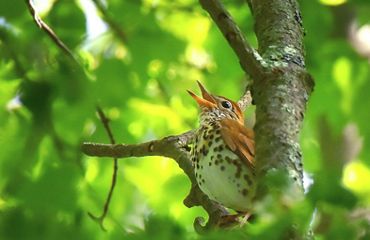
Two other Indigenous scholars—Beverly Jacobs, Mohawk Nation Bear Clan and senior advisor to the president on Indigenous relations and outreach at the University of Windsor, and Dawn Martin-Hill, Mohawk Wolf Clan, McMaster University professor and principal investigator of Ohneganos—joined Kimmerer in issuing specific calls to action for The Nature Conservancy and other Western conservation organizations. They asked these groups to do more to dismantle the Doctrine of Discovery, to acknowledge Indigenous knowledge at the same level as scientific knowledge, to hire Indigenous traditional ecological knowledge specialists, and to more fully implement the United Nations Declaration on the Rights of Indigenous Peoples in our work.
Martin-Hill put it frankly: “The greatest biodiversity in the world is held by just six percent of the world's population, which is Indigenous Peoples. Where we own, manage and control land, it is beautiful, and there is biodiversity and resilience. So, if you want to mitigate the climate crisis, you need to give the land back.”
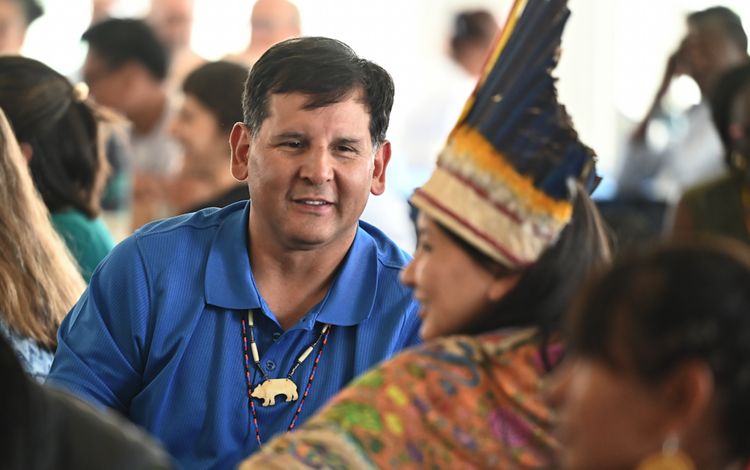
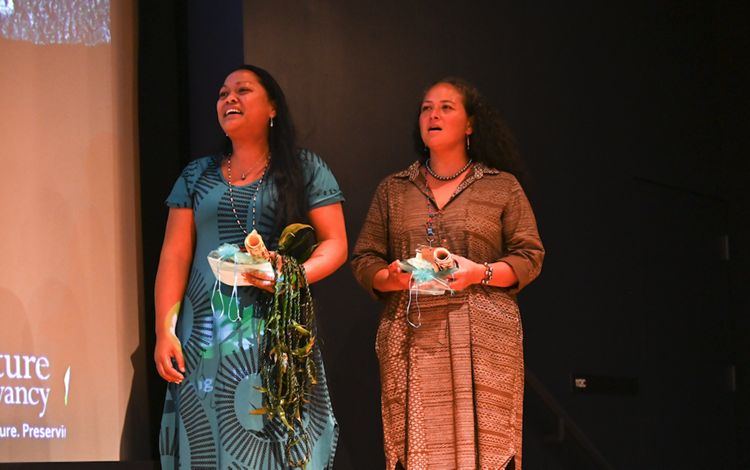
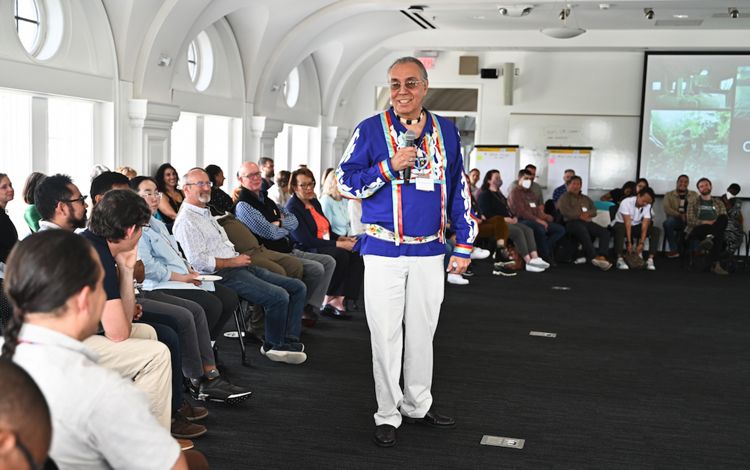
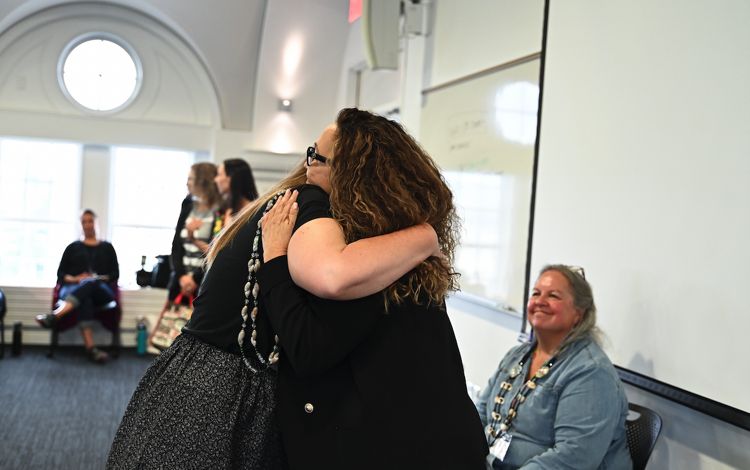
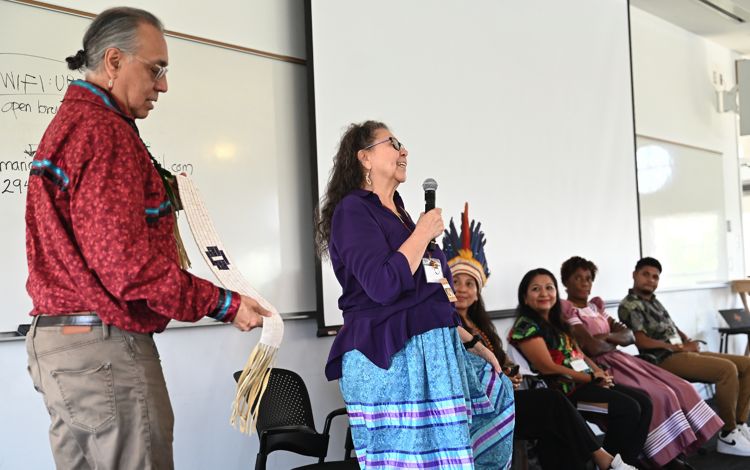
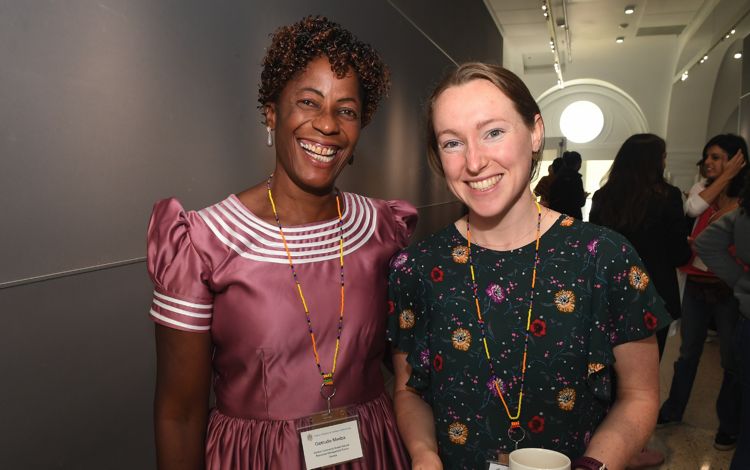
The Missing Ingredient: Love
Ultimately, the Voice, Choice & Action gathering emphasized that the world is at a crossroads and that love for nature and each other is essential in giving people the courage to bring forth the future we want. Indigenous or not, all people depend on healthy lands and waters. If we don't share power and ensure that the original stewards of these places have the chance to care for and heal them, humanity will continue down an extractive path in which people, plants and animals continue to be in harm's way.
“We have to tap into not only the power of the brain but the power of the heart,” said Printup in his closing remarks. “That’s where those innovative ideas are going to come from. I believe it’s a time of adaptability; the Earth is requiring that of us. The Nature Conservancy is working to adapt their own approaches and looking for creative ways of working, and I commend them for that.”
“We are coming together in this moment to center what Indigenous and Traditional worldviews and vision have to offer us,” added Andrea Burgess, Tribal citizen of the Native Village of Kwinhagak, Alaska and director of The Nature Conservancy’s Global Indigenous Peoples and Local Communities Program. "This moment is a ripple effect of the thousands of ancestors who envisioned a more profound global orientation—an orientation that puts us back into balance.”
Hear About Our Latest Stories First
Sign up to receive monthly conservation news and updates from New York.

